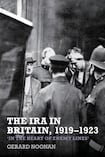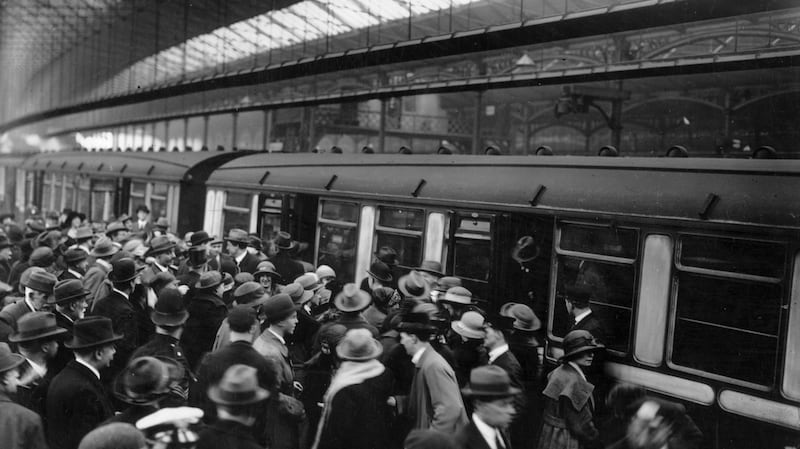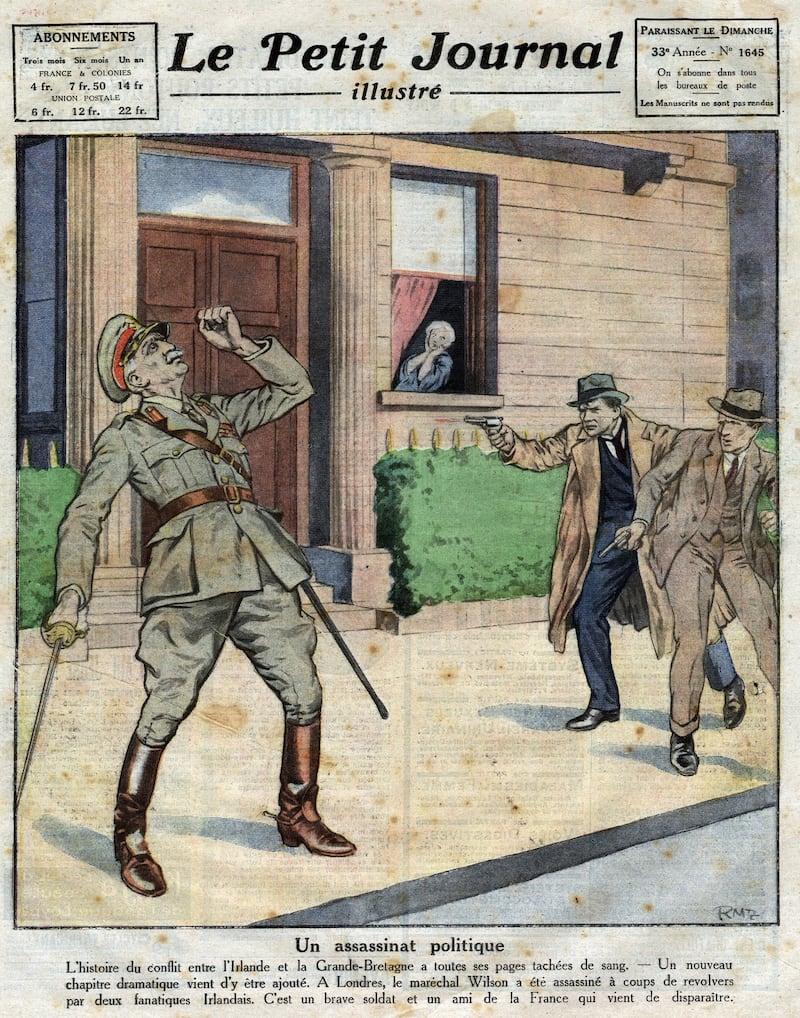
In April 1921, armed IRA men raided Lyons’ Cafe in Manchester, firing shots in the air to disperse customers and staff, and dousing the premises in paraffin. Before setting the building alight, one Volunteer explained their actions: “We are doing what you are doing in Ireland.” While the “front line trenches”, as IRA commanders put it, were in Ireland, the IRA in Britain were operating “in the heart of enemy lines”. Gerard Noonan reveals a neglected aspect of the War of Independence, showing how a national focus is too narrow for a time when one in three Irish-born people lived abroad.
Nationalism bloomed in the impoverished “Little Irelands” of British cities, and life in Britain was a formative experience for many of the revolutionary generation. Michael Collins clerked in London and studied at King’s College, and like many found community and identity in the Gaelic League and the GAA. As politics in Ireland became radicalised, Collins and others turned to more militant organisations too: Sam Maguire, who served with Collins on the London GAA county board, swore his fellow Cork man into the IRB, while Peckham councillor Liam MacCarthy encouraged Collins and others to return home to avoid conscription. Many Volunteers from Britain fought during Easter 1916, while British prisons – most notoriously Frongoch in Wales – became the IRA’s university of revolution in the post-Rising crackdown.
When the War of Independence began in 1919, the growing number of Volunteers in Britain became a vital source of arms for the emergent IRA. They did business with Jewish gunsmiths in London, German arms dealers in Glasgow, criminal gangs in Sheffield and Birmingham, anyone who would take their money: “we found the Englishman always willing to do business”, remembered Liverpool Volunteer Paddy Daly. Irish men were sources, too: a Sgt Roche helped smuggle guns from Chelsea barracks, while Irish miners in Lancashire and Lanarkshire set aside portions of their daily explosives allocation to send home. By 1921 there were more than 2,500 Volunteers in Britain, and by carefully combing their correspondence, memoirs, and Bureau of Military History interviews, Noonan shines light on many forgotten stories (albeit at times with too little scepticism of later recollections).

Mass emigration was why so many Irish were in Britain, and it was a fraught issue throughout the war. The Dáil forbade unauthorised emigration from Ireland in 1920, and the IRA ordered the seizure of passports and tickets by Liverpool docks in 1921 (Merseyside Volunteers felt sorry for their fellow emigrants and returned the documents). Tensions persisted between the Irish-born and those with English accents (although in Birmingham, gunrunners required locally born Dan O’Malley to translate the local slum patois), and it is disappointing that Noonan does not explore the diaspora’s broader differences of class, religion and ideology further: both at home and abroad, there were 40 shades of green.
Flow of arms
The flow of arms across the Irish Sea was only a steady trickle, but it was a vital artery for the chronically outgunned IRA. The Dáil was wary, however, of extending military operations to Britain, only taking responsibility for the IRA as “a national army of defence”. Yet as the war in Ireland escalated in autumn 1920, operations in England were authorised (though not in Scotland or Wales, as their people were “more or less Gaelic”, as Liam Lynch put it in 1923). Along with revenge attacks and the targeting of political and military leaders, Rory O’Connor (‘Officer Commanding, Britain’) sought to disrupt “the daily life of enemy people”. Collins argued that the offensive would force the British people “to understand” the situation in Ireland, and thus pressure their government to surrender.
After the the brutal Black and Tan burnings of Balbriggan and Trim, the Liverpool IRA sought “an eye for an eye”. On November 27th they launched more than 40 arson attacks around Merseyside, causing more than £500,000 damage; a civilian was shot dead in gun battles with police.
A major campaign, however, proved elusive. To O'Connor's frustration, training and initiative was often lacking: the 239 operations before the summer 1921 truce, Daly conceded, were mostly "pin pricks". Yet there were more operations than in some regions of Ireland, and attacks garnered significant public attention: "the papers played up our little acts considerably", remembered Dennis Brennan. The campaign did not, however, have the desired effect on public opinion. On the contrary, "terrorism" (as Liverpool's Edward Brady described it) caused outrage, and undermined, in the words of the socialist newspaper Forward, "the growing sympathies of [British] workers for the Irish people". Unfortunately, wider political context – from constitutional nationalism in the Irish community to British popular opposition to state terror in Ireland – is mostly absent.
Unrealised plans
It is tempting to wonder what would have been the effect of IRA leaders’ unrealised ambitions for a much more extensive campaign in Britain. In London there were active operations to kidnap and assassinate dozens of MPs and cabinet members. In Liverpool there were plans to “wreck” the docks, ring the city with “a circle of fires”, and to launch a bombing campaign such that “whole streets would probably be demolished”, as Daly enthused. O’Connor thought bombs on the railway would cause “considerable alarm”, and that attacks on gas and electricity plants might provoke wider public unrest from “the mob”. IRA leaders even met Russian communists, and Egyptian and Indian nationalists with a view to launching joint operations against the common imperial enemy.

A lack of capacity, the truce, and the Treaty all inhibited such plans, and despite Lynch’s efforts to launch an “active destruction policy” in England in 1923 (“the first blow should be concerted BIG”, agreed Éamon de Valera), the Civil War – sparked by the controversial assassination of Field Marshall Henry Wilson in London – killed them off completely. The new National Army co-operated with (illegal) mass arrests and deportation of anti-Treaty republicans in Britain, while the deaths of O’Connor, Collins, and Lynch perhaps removed those most likely to countenance future operations outside the Free State. Republican terrorism in Britain was disowned by independent Ireland (£500,000 compensation was paid by the state for the arson campaign), and became the long, dark obsession of dissidents.
Compared with later violence, and the war in Ireland, the IRA’s activities in Britain have often been overlooked. Noonan’s important study emphasises that both the nation and the national struggle stretched beyond our shores, and that we still have much more to learn about the history of the Irish in Britain.
- Dr Christopher Kissane is a historian at the London School of Economics and Political Science










